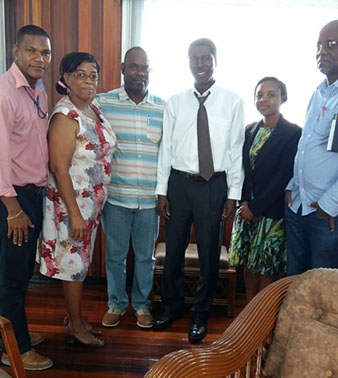A recently formed union is seeking overseas aid to help determine whether the headquarters of the Guyana Geology and Mines Commission (GGMC) on Brickdam is safe from mercury contamination.
The Guyana Civil Servants and General Workers Union (GCS&GWU) represents employees of the GGMC and protested for several weeks over the operations of a gold purifying lab of the Guyana Gold Board (GGB) which had been operating in the GGMC compound. The GGB lab has since been relocated from the compound after sustained protests but concerns remain among GGMC workers about their health particularly since they say that two of their co-workers have died of kidney-related ailments which could be possibly linked to mercury contamination.
Mercury can be a deadly poison as it builds up in the system.
On Friday in a statement, the GCS&GWU said it is seeking help to determine whether a recent mercury decontamination exercise by the GGMC was successful. Further, the assistance will seek to determine whether the decontamination exercise was undertaken in accordance with internationally accepted standards and best practices.
Towards this end, the union said that it requested meetings with international agencies and has met with Representatives of the Organization of American States (OAS), the United Nations Development Programme, the Pan-American Health Organization and the Embassy of the United States of America. The union said that discussions were fruitful.
The union noted that earlier this year, the GGMC and the GGB acknowledged that there was a problem with mercury emissions but denied that the matter was at a crisis stage.
However, during the course of the year, the union said that two employees died from kidney failure, cases which workers and the union believe are linked to high levels of mercury in the blood. Their deaths are one of the main reasons that the employees and management decided to stay away from work, the union said.
“As a result of the mercury contamination, GGMC’s employees were tested and found with varying high levels of mercury in their blood. Over two hundred employees were found to have 4 micrograms per litre (mcg/L) and above. Some of the high mercury readings for GGMC’s employees obtained were 8, 9, 11, 12, 13, 15, 16, 17, 18, 20, 21, 24, 25, 32 and 57 micrograms per litre (mcg/L). Most of the employees were sent on `sick leave’ for mercury toxemia and have commenced intense treatment to reverse any impending health defects”, the union stated.









